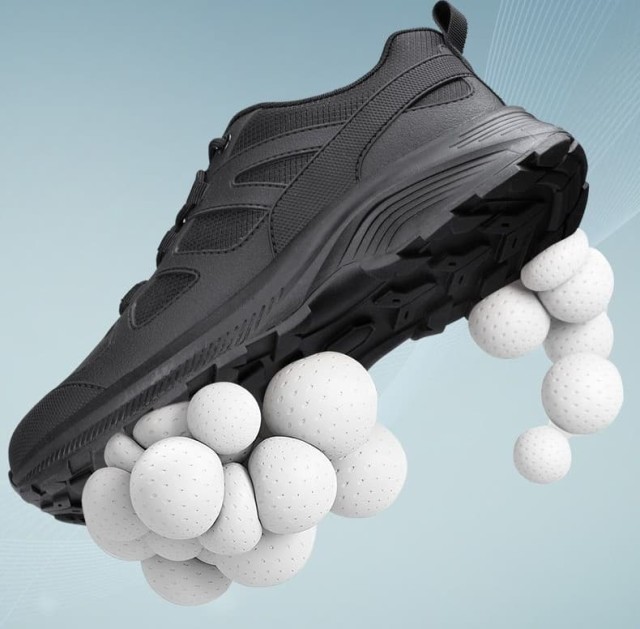Finding safety boots that deliver both occupational protection and all-day comfort requires careful consideration of sizing standards, material properties, and workplace hazards. This guide combines podiatrist recommendations with industrial safety insights to help security professionals and industrial workers make informed choices.
Safety Boot Sizing Essentials for Security Professionals
Proper fit begins with understanding measurement systems and your foot's unique dimensions. Ill-fitting boots cause fatigue, blisters, and long-term musculoskeletal issues—problems easily avoided with these fundamentals.
Understanding EUR vs. UK Sizing Standards
- UK Sizing: Uses whole numbers (e.g., UK 9) with half increments. Typically runs slightly larger than EUR sizing.
- EUR Sizing: Based on foot length in centimeters. A UK 9 translates to EUR 43, but always verify brand-specific charts as lasts (shoe molds) vary.
Pro Tip: Brands like 3515 provide conversion charts accounting for last shapes—critical for safety toe designs where extra space affects protection.
Measuring Foot Dimensions Accurately
- Trace & Measure: Stand on paper, trace feet, and measure length/width at the widest point. Do this at day’s end when feet swell slightly.
- Sock Considerations: Wear work-appropriate socks during measurement. Thermal or padded socks add 0.5–1 size.
- Arch Type Check: Wet your foot, step on cardboard, and compare the imprint to determine flat, neutral, or high arches.
Key Features of Properly Fitted Safety Boots
Toe Room and Arch Support Requirements
- Toe Box: Should allow 1–1.5 cm of space beyond your longest toe. Safety toes (steel, composite) need extra depth—test by pressing down; no toe contact with the cap.
- Arch Support: Neutral arches suit most insoles, while flat/high arches require structured support to prevent plantar strain.
Material Flexibility and Break-In Periods
| Material | Break-In Time | Key Traits |
|---|---|---|
| Full-Grain Leather | 2–3 weeks | Molds to feet, durable, waterproof with treatment |
| Synthetic (PVC/PU) | 1–2 weeks | Lightweight but less breathable; prone to creasing |
| Gore-Tex Liners | Minimal | Waterproof yet breathable; ideal for variable climates |
Podiatrist Note: Leather’s natural flexibility reduces "hot spots" during break-in versus rigid synthetics.
Avoiding Common Sizing Mistakes
Case Study: Workplace Injuries Linked to Poor Boot Fit
A 2023 logistics warehouse study found:
- 62% of slip/fall incidents involved workers with improperly fitted boots (too loose or restrictive).
- 78% of reported foot fatigue cases stemmed from inadequate arch support.
Expert Tips for Testing Boot Fit Pre-Purchase
- Heel Slippage Test: Walk uphill; heels shouldn’t lift more than 0.5 cm.
- Flex Point Check: Boots should bend at the ball of your foot, not the arch.
- Lace Adjustment: Tighten until snug but not circulation-restricting.
Ready for boots that protect without compromising comfort? 3515’s engineered designs merge ANSI-rated safety with ergonomic support—trusted by industrial teams worldwide. [Contact our specialists] to match your hazard profile with the ideal fit.
Related Products
- Wholesale Customizable Suede Safety Boots - Puncture-Proof with Velcro Closure
- Durable Mid-Cut Tactical Boots for Wholesale & Private Label
- Customizable Anti-Smash Safety Boots for Wholesale & Private Label Manufacturing
- Athletic Safety Shoes with Dial Closure & Steel Toe for Wholesale & Custom Manufacturing
- Wholesale Customizable Safety Boots Durable & Protective Footwear Manufacturing
Related Articles
- How to Choose Work Boots That Match Your Industry's Safety Needs
- Work Boots vs. Western Boots: How to Choose the Right Footwear for Labor Safety
- How Safety Work Boots Engineer Protection: Features and Standards for Targeted Hazard Mitigation
- How to Choose Work Boot Materials for Maximum Safety and Durability
- Matching Men’s Work Shoe Safety Technologies to Workplace Hazards



















